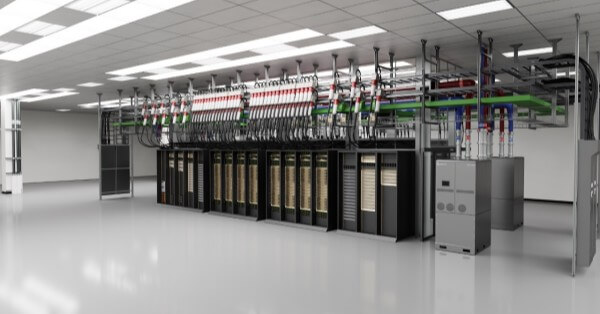NVIDIA’s AI Factories Are Transforming Enterprise AI at Scale
NVIDIA and its ecosystem partners are ushering in a new era of AI-powered data centers—AI factories. Unlike traditional data centers that primarily store and process information, AI factories are designed to manufacture intelligence, transforming raw data into real-time insights that fuel automation, decision-making, and innovation.
As enterprises and governments accelerate AI adoption, AI factories are emerging as critical infrastructure, driving economic growth and competitive advantage. Companies investing in purpose-built AI factories today will be at the forefront of innovation, efficiency, and market differentiation tomorrow.
What Sets AI Factories Apart from Traditional Data Centers?
While conventional data centers are built for general-purpose computing, AI factories are optimized for high-volume AI workloads, including:
- Data ingestion – Processing vast amounts of structured and unstructured data.
- AI training – Developing advanced AI models using massive datasets.
- Fine-tuning – Adapting pre-trained AI models for specific real-world applications.
- AI inference – Running AI models at scale to deliver real-time insights and automation.
In an AI factory, intelligence isn’t a byproduct—it’s the primary output. This intelligence is measured in AI token throughput, representing the real-time predictions that drive autonomous systems, automation, and digital transformation across industries.
The Rising Demand for AI Factories: Why Enterprises Need Them
Three key AI scaling laws are driving the demand for AI factories:
- Pretraining Scaling: Training large AI models requires massive datasets, expert curation, and significant computing power—50 million times more compute than five years ago. Once trained, these models become the foundation for new AI applications.
- Post-Training Scaling: Fine-tuning AI models for specific enterprise use cases requires 30x more compute than pretraining. As businesses customize AI, the demand for high-performance AI infrastructure surges.
- Test-Time Scaling (Long Thinking): Advanced AI applications, including agentic AI and autonomous systems, require iterative reasoning—100x more compute than standard AI inference.
Traditional data centers are not designed for this level of demand. AI factories offer a purpose-built infrastructure to sustain and optimize AI-driven workloads at scale.
Global Investment in AI Factories: A Strategic Priority
Governments and enterprises worldwide are investing in AI factories as strategic national infrastructure, recognizing their potential to drive innovation, efficiency, and economic growth.
Major AI Factory Initiatives Worldwide
- Europe – The European High-Performance Computing Joint Undertaking is developing seven AI factories across 17 EU member states.
- India – Yotta Data Services and NVIDIA have partnered to launch the Shakti Cloud Platform, democratizing access to advanced GPU-powered AI resources.
- Japan – Cloud providers such as GMO Internet, KDDI, and SAKURA Internet are integrating NVIDIA-powered AI infrastructure to transform robotics, automotive, and healthcare industries.
- Norway – Telecom giant Telenor has launched an AI factory for the Nordic region, focusing on workforce upskilling and sustainability.
These investments highlight how AI factories are becoming as essential as telecommunications and energy infrastructure.
Inside an AI Factory: The New Manufacturing of Intelligence
An AI factory operates like a highly automated manufacturing plant, where:
- Raw data (foundation models, enterprise data, and AI tools) is processed.
- AI models are refined, fine-tuned, and deployed at scale.
- A data flywheel continuously optimizes AI models, ensuring they adapt and improve over time.
This cycle allows AI factories to deliver faster, more efficient, and more intelligent AI solutions, driving business transformation across industries.
Building AI Factories: The Full-Stack NVIDIA Advantage
NVIDIA provides a comprehensive AI factory stack, ensuring that every layer—from hardware to software—is optimized for AI training, fine-tuning, and inference at scale. NVIDIA and its partners offer:
- High-performance computing
- Advanced networking
- AI infrastructure management and orchestration
- The largest AI inference ecosystem
- Storage and data platforms
- Blueprints for design and optimization
- Reference architectures
- Flexible deployment models
1. AI Compute Power: The Core of AI Factories
At the heart of every AI factory is accelerated computing. NVIDIA’s Blackwell Ultra-based GB300 NVL72 rack-scale solution delivers up to 50x the AI reasoning output, setting new standards for performance.
- NVIDIA DGX SuperPOD – A turnkey AI factory infrastructure integrating NVIDIA accelerated computing.
- NVIDIA DGX Cloud – A cloud-based AI factory, offering scalable AI compute resources for enterprises.
2. Advanced Networking for AI Factories
Efficient AI processing requires seamless, high-performance connectivity across massive GPU clusters. NVIDIA provides:
- NVIDIA NVLink and NVLink Switch – High-speed multi-GPU communication.
- NVIDIA Quantum InfiniBand & Spectrum-X Ethernet – Reducing data bottlenecks, enabling high-throughput AI inference.
3. AI Infrastructure Management & Workload Orchestration
Managing an AI factory requires AI-driven workload orchestration. NVIDIA offers:
- NVIDIA Run:ai – Optimizing AI resource utilization and GPU management.
- NVIDIA Mission Control – Streamlining AI factory operations, from workloads to infrastructure.
4. AI Inference & Deployment
The NVIDIA AI Inference Platform ensures AI factories can transform data into real-time intelligence. Key tools include:
- NVIDIA TensorRT & NVIDIA Dynamo – AI acceleration libraries for high-speed AI inference.
- NVIDIA NIM microservices – Enabling low-latency, high-throughput AI processing.
5. AI Storage & Data Platforms
AI factories require scalable data storage solutions. NVIDIA’s AI Data Platform provides:
- Custom AI storage reference designs – Optimized for AI workloads.
- NVIDIA-Certified Storage – Delivering enterprise-class AI data management.
6. AI Factory Blueprints & Reference Architectures
NVIDIA Omniverse Blueprint for AI factories allows engineers to:
- Design, test, and optimize AI factory infrastructure before deployment.
- Reduce downtime and prevent costly operational issues.
Reference architectures provide a roadmap for enterprises and cloud providers to build scalable AI factories with NVIDIA-certified systems and AI software stacks.
Flexible Deployment: AI Factories On-Premises & in the Cloud
Enterprises can deploy AI factories based on their IT needs:
- On-Premises AI Factories – Using NVIDIA DGX SuperPOD, companies can rapidly build AI infrastructure for large-scale AI workloads.
- Cloud-Based AI Factories – NVIDIA DGX Cloud offers AI factories as a service, enabling flexible, scalable AI deployment.
The Future of AI Factories: Powering the Next Industrial Revolution
As enterprises and governments race to harness AI, AI factories are becoming the foundation of the AI economy. NVIDIA’s full-stack AI solutions provide the infrastructure, computing power, and software needed to manufacture intelligence at scale.
By investing in AI factories today, businesses can accelerate innovation, optimize operations, and stay ahead in the AI-driven future.
























